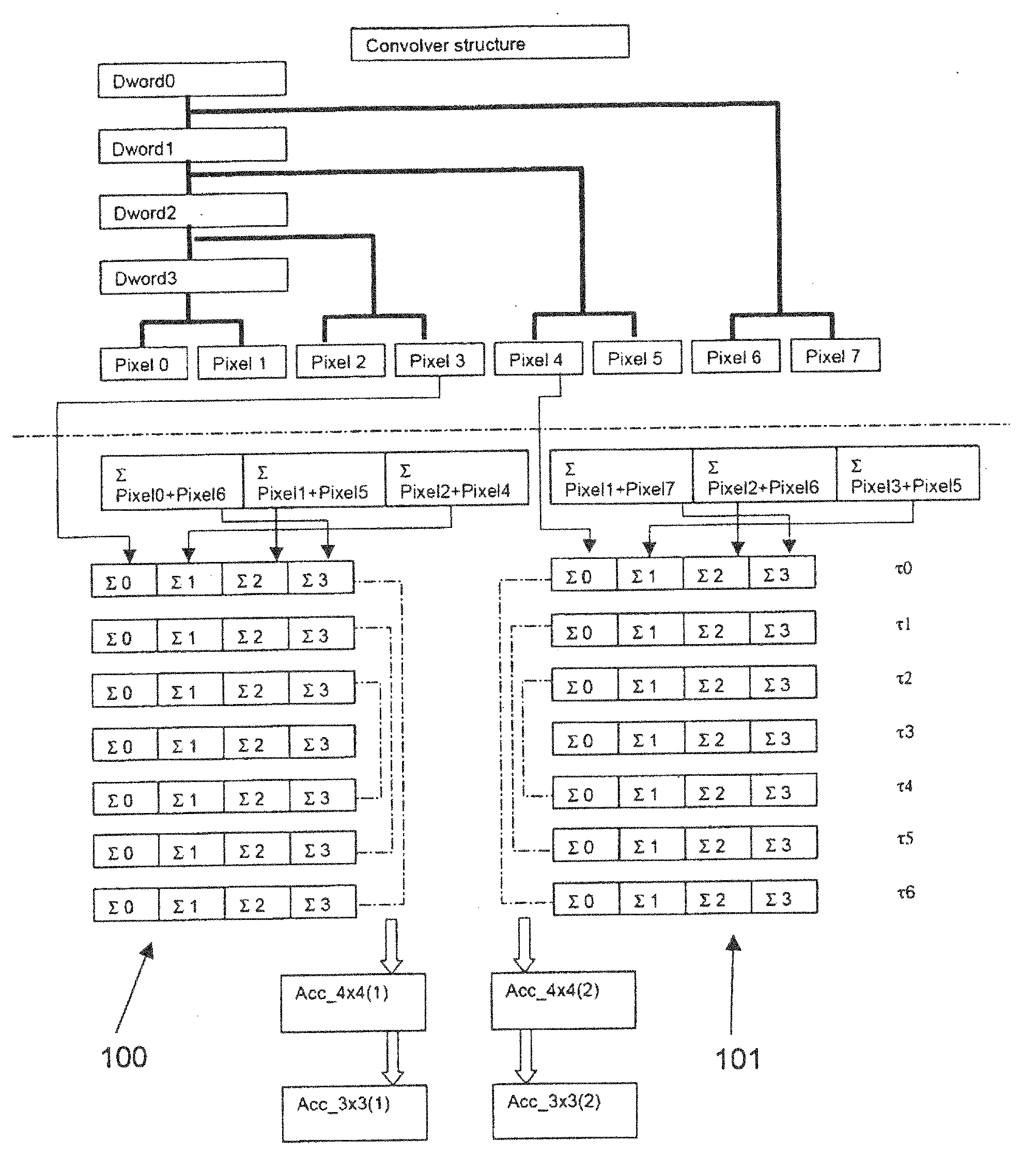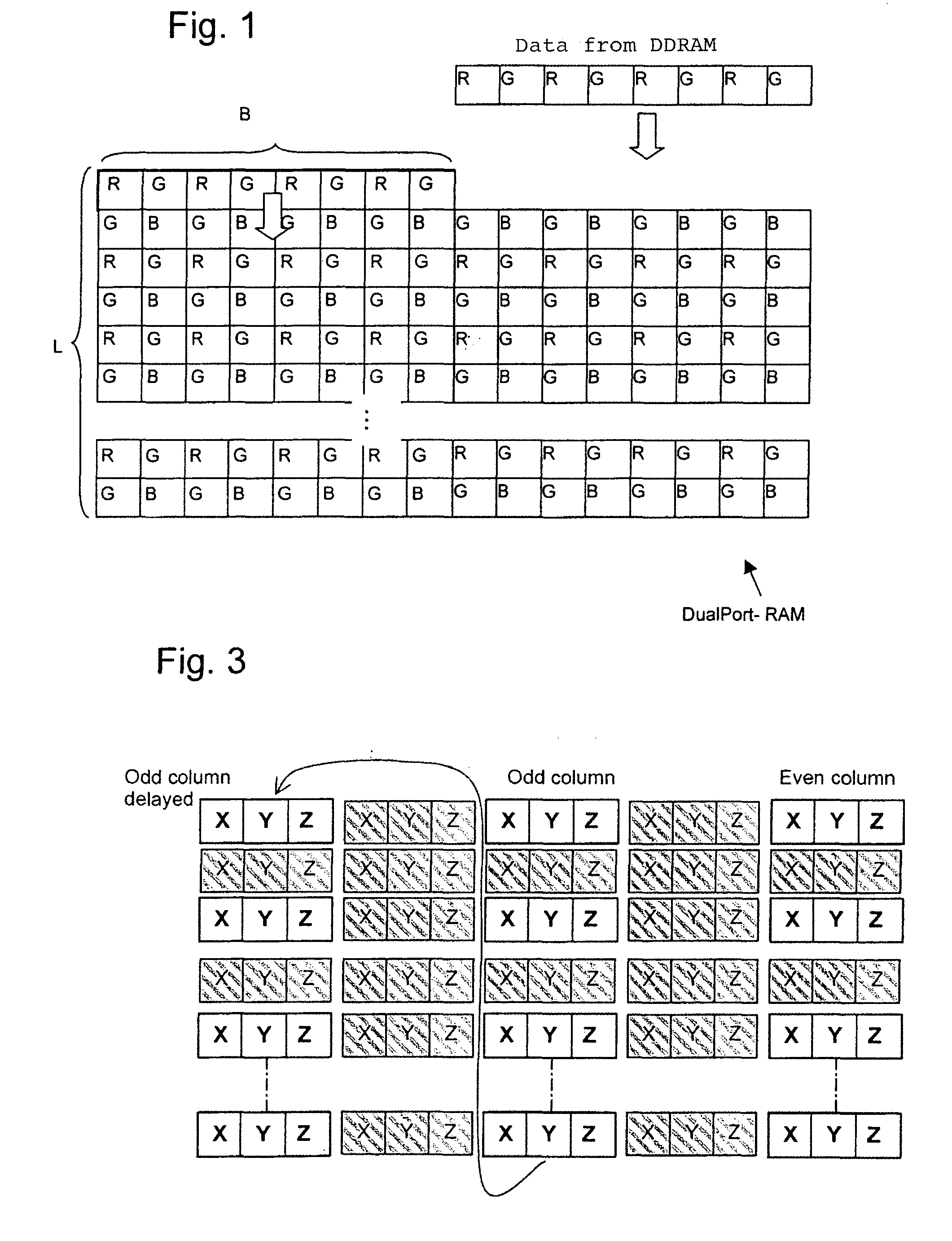Image-processing device for color image data and method for the image processing of color image data
a color image and image data technology, applied in the field of color image processing, can solve the problems of loss, inability to display raw data of such an image, inability to realize real-time display, etc., and achieve the effect of reducing artifacts, reducing costs, and realizing very easily
- Summary
- Abstract
- Description
- Claims
- Application Information
AI Technical Summary
Benefits of technology
Problems solved by technology
Method used
Image
Examples
Embodiment Construction
[0030]To achieve the task of creating an optimized memory interface that can support both the operation with DDRAMs as image memories and also the formation of large neighborhoods of a size greater than 7×7 pixels in real time, the raw image data supplied by the sensor is converted by an analog-digital converter (ADU) into digital signals and then stored row-by-row into an image memory made from one or more DDRAMs. After ca. 32 rows have been stored, image data is read from the memory. This process reads short rows with 16 pixel lengths from the image memory and writes these into a fast dual-port RAM that in turn fills a register structure. This scheme makes it possible to reduce the load on the image memory. The resulting data rate during reading is only slightly higher than the data rate of the sensor. In addition, a data rate that is higher by the factor 4 to 8 is achieved at the output for the use of a fast dual-port RAM that is relatively small and thus can be integrated well. ...
PUM
 Login to View More
Login to View More Abstract
Description
Claims
Application Information
 Login to View More
Login to View More - R&D
- Intellectual Property
- Life Sciences
- Materials
- Tech Scout
- Unparalleled Data Quality
- Higher Quality Content
- 60% Fewer Hallucinations
Browse by: Latest US Patents, China's latest patents, Technical Efficacy Thesaurus, Application Domain, Technology Topic, Popular Technical Reports.
© 2025 PatSnap. All rights reserved.Legal|Privacy policy|Modern Slavery Act Transparency Statement|Sitemap|About US| Contact US: help@patsnap.com



